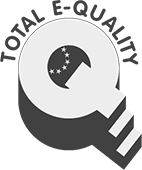Seals and whales are at the end of the food chain and are thus exposed to a high bioaccumulation of pollutants. The aim of the project under the German HELCOM Chairmanship 2020 - 2022 was to screen for potentially hazardous novel contaminants in marine mammals from the Baltic Sea using state-of-the-art analytical methods for wide-scope target and suspect screening. For this purpose, 11 pooled liver samples and one non-pooled muscle sample from 11 marine mammals (harbour porpoise (Phocoena phocoena), common dolphin (Delphinus delphis), grey seal (Halichoerus grypus), harbour seal (Phoca vitulina)) were provided by HELCOM contracting parties from Germany, Sweden, Denmark and Poland and analysed for the presence of 65,690 substances. A simplified risk assessment was carried out for the detected pollutants, they are published in the NORMAN database system, and are available for the development of a marine mammal indicator and for the development of a Baltic Sea-wide and possibly European action plan on hazardous substances in the sea.

ChemicalsHealthWaterSustainability | Strategies | International matters
Screening study on hazardous substances in marine mammals of the Baltic Sea
Wide-scope target and suspect screening
Reihe
Texte | 36/2022
Seitenzahl
122
Erscheinungsjahr
Autor(en)
Jaroslav Slobodnik, Georgios Gkotsis, Maria-Christina Nika, Konstantinos Vasilatos, Nikolaos S. Thomaidis, Nikiforos Alygizakis, Peter Oswald, Simon Rohner, Ursula Siebert. Farina Reif, Michael Dähne, Sara Persson, Anders Galatius, Iwona Pawliczka, Anita Künitzer
Sprache
Englisch
Verlag
German Environment Agency
Links
Zusatzinfo
PDF ist barrierefrei
Dateigröße
3086 KB
Preis
0,00 €
Druckversion
nicht lieferbar
Als hilfreich bewertet
266




